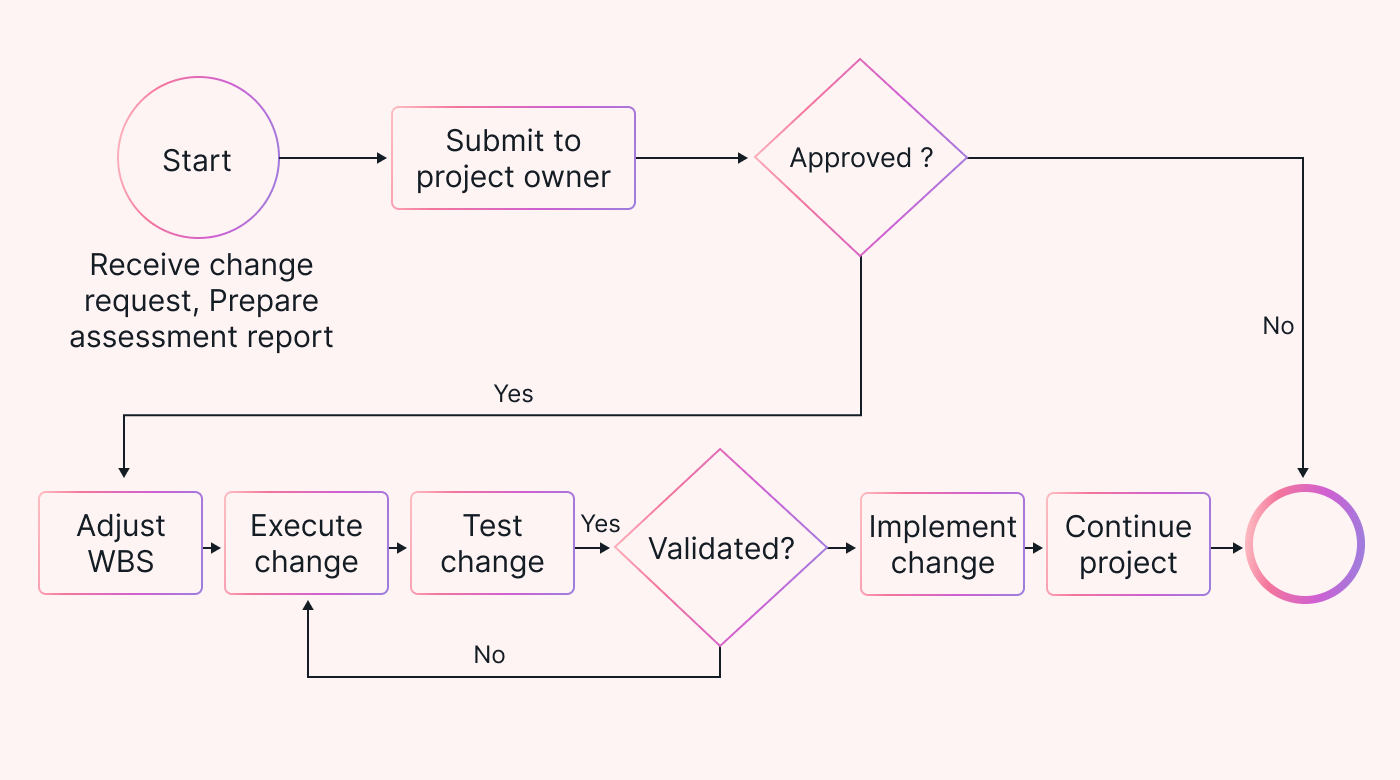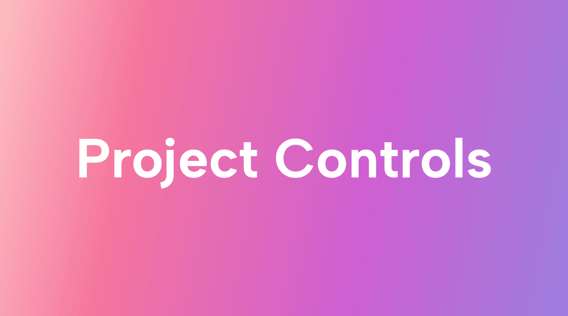The holy grail in the world of project management is to deliver a project when it’s expected and without cost overruns. But only 33% of projects are completed on time and within budget.
And while the reasons given for this failure vary wildly, they almost always boil down to one simple thing: inadequate project controls.
So what are project controls? In simple terms, they’re processes to gather and analyze project data. This data allows you to ensure that costs stay within the limits and the schedule of work remains on track.
But it’s a bit more complicated than that.
Understanding project controls
Measuring your progress
There are, in fact, six constraints measured and controlled by project managers: time, cost, scope, quality, risk and resources. It’s useful to think of project controls as the way to meet expectations for every project: delivered on time, within budget and without sacrificing quality.
Management guru Peter Drucker is widely quoted as saying: “If you can’t measure it, you can’t manage it” (although he denied saying it all his life). Whatever he said or didn’t say, the Project Management Institute (PMI) agrees with the principle: “Measurement is key to demonstrating the impact and value of projects.”
PMI adds that measurement improves visibility of projects and provides the data to support the business case. At the same time, the institute notes that measurement shouldn’t be limited to the “iron triangle” metrics of scope, schedule, and cost. It is equally important to measure the benefits of a project, such as improved efficiencies, quality or customer satisfaction.
Benefits of project controls
Effective project controls add value by measuring certain activities, and can help you:
- Align projects with organizational goals
- Keep projects on schedule
- Manage risks
- Control project budgeting and forecasting
- Track project costs
 |
These metrics help you stay focused on project objectives while, at the same time, providing a mechanism for feedback and reporting to project stakeholders.
Three methods of project control
It is very easy to lose sight of a project’s actual objectives and goals. Projects, especially larger ones, can easily become unmanageable without a steady hand at the controls, specifically those related to cost, time and performance.
Proper project controls help you know if there is a problem and to alter course when necessary. This is achieved through control mechanisms, of which there are three basic types: cybernetic, go/no-go, and post-performance.
Cybernetic Control
Probably the preferred method of control, cybernetic control is based on the idea that all projects have inputs and outputs. The focus of cybernetic control is on making sure that outputs are achieved.
If there are delays on any of the milestones (outputs) or the work doesn’t meet the expected quality standards, a red flag goes up. At this point, the situation is assessed and corrective action taken to keep the project on track.
Go/No-go Control
A more proactive mechanism is the go/no-go control, which tests that predefined preconditions have been met before work on something continues. Some project managers like to use this control selectively for specific tasks throughout a project lifecycle.
The biggest strength of this control is that it can be linked to tasks in the project plan.
Post-performance Control
Finally, post-performance control is even more reactive than cybernetic control because it is only applied after the project or task is complete. The idea isn’t to alter what has already happened, but to record good and bad practices observed, and to use that information to improve future project performance.
Post-performance controls will always include a detailed set of recommendations on how to ensure future projects don’t succumb to the same pitfalls.
A real-world example
A recent high profile project that relied heavily on project controls was NASA’s Mars Pathfinder project. Due to severe budgetary constraints, the agency adopted a ‘Faster, Better, Cheaper’ mindset early on.
For NASA, this meant more planetary missions, costing less than $150 million each, and taking no longer than three years to implement. The first of these was the Mars Pathfinder mission and was undertaken in partnership with the Jet Propulsion Laboratory.
Although it was an in-house development effort, a significant number of deliverables required resources from outside partners, vendors, and consultants. That meant strict systems and project controls for measuring, updating, and solving procurement issues throughout the project lifecycle.
The mission was a success, and, over the next few months, sent back masses of new information and thousands of photos from the red planet. That success led to multiple (more) missions.
Focusing on the measurables
Project controls should be designed into the project plan. Once a framework is established with a project charter or brief, details are worked out in a Work Breakdown Structure (WBS) or product backlog. It’s at this stage that appropriate checkpoints are more easily identified and project controls can be picked for project milestone or phases.
 |
Project scope
The biggest enemy of any project is scope creep, which occurs when unplanned, additional work is added to the project. Different project management frameworks handle this in different ways.
With the traditional waterfall approach, once the project scope is documented, it can't be altered without a change request being submitted, assessed and approved. And that typically only happens if the change won't negatively affect project success.
In the Agile world, where projects are developed iteratively, change is an integral part of the process, but only when it doesn’t endanger the original sprint goal. If it does, there are two options: not implementing the change or adding the change to the product backlog and dealing with it in a later sprint.
Scheduling
No project can succeed without a structured task schedule. In the Waterfall approach, this is done using the WBS In agile you’d use the product backlog. Phases of a project can have milestones to help track overall progress, and incorporate project control mechanisms.
Agile approaches typically use online tools that allow you to capture this detail and share it with the team. These tools can also trigger alerts when and where project controls are scheduled.
Quality management
Quality management is a critical part of project success. You should use project controls to continually measure the quality of project activities. When the work doesn’t meet acceptable standards, corrective action should be taken.
No milestone is achieved until the work is completed to the required standard. But this carries a risk: more time may be needed to implement corrective action, and that can increase the cost of the project.
Change management
It’s almost impossible to foresee all eventualities, and anticipate all the problems that could crop up during the project planning phase. This is why you need a change management process.
The change management process should include defined steps: receive a change request, assess it, decide on it, adjust the WBS or product backlog, and then execute.
 |
Many changes are small with little effect on the project budget or timeline. But some changes could endanger the success of the project. In those cases, it’s often better to push them off as a separate project or to go back to the drawing board.
Risk Management
Risks are external factors that could delay or derail your project. Most of the time you can foresee the things that may cause problems and create contingency plans to manage those risks.
But every now and then, something can crop up in the middle of a project that you didn’t expect.
You could lose a member of your project team or a critical element may suddenly become unavailable to the project.
That’s why you need risk management: Planning for the things that may cause problems and having a response at the ready. In a sense, managing a project are like a high wire act, and using project controls is like the safety net.
The importance of project reporting
As Donald Rumsfeld put it all those years ago: “...there are things that we don’t know we don’t know”. The purpose of project reporting is to inform stakeholders about overall project progress.
A significant part of project reporting can be automated, including sharing project control data, which can reduce the need for (intrusive) meetings.
A popular tool used for project reporting is a Gantt chart. It can help team members understand the project schedule, track progress, and identify potential problems.
Another great tool for monitoring project tasks is a Kanban board. Popular for agile projects, it, too, can help team members understand the project schedule and how/where their work fits in.
Where bad projects go to die
A lack of project controls can get you into trouble fast. By setting up solid project controls and tracking the work, you can avoid that trouble
One way to that is to set up a timeline for your project. Or set up Motion’s Progress Tracker to monitor the status of your projects.
Try Motion’s 7-day free trial now.





